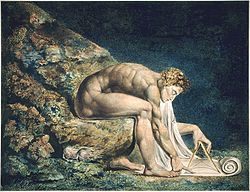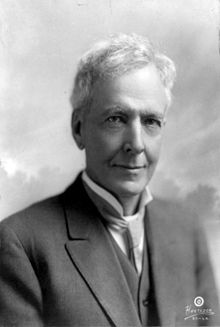Portal:History of science
The History of Science Portal
The history of science covers the development of science from ancient times to the present. It encompasses all three major branches of science: natural, social, and formal. Protoscience, early sciences, and natural philosophies such as alchemy and astrology during the Bronze Age, Iron Age, classical antiquity, and the Middle Ages declined during the early modern period after the establishment of formal disciplines of science in the Age of Enlightenment.
Science's earliest roots can be traced to Ancient Egypt and Mesopotamia around 3000 to 1200 BCE. These civilizations' contributions to mathematics, astronomy, and medicine influenced later Greek natural philosophy of classical antiquity, wherein formal attempts were made to provide explanations of events in the physical world based on natural causes. After the fall of the Western Roman Empire, knowledge of Greek conceptions of the world deteriorated in Latin-speaking Western Europe during the early centuries (400 to 1000 CE) of the Middle Ages, but continued to thrive in the Greek-speaking Byzantine Empire. Aided by translations of Greek texts, the Hellenistic worldview was preserved and absorbed into the Arabic-speaking Muslim world during the Islamic Golden Age. The recovery and assimilation of Greek works and Islamic inquiries into Western Europe from the 10th to 13th century revived the learning of natural philosophy in the West. Traditions of early science were also developed in ancient India and separately in ancient China, the Chinese model having influenced Vietnam, Korea and Japan before Western exploration. Among the Pre-Columbian peoples of Mesoamerica, the Zapotec civilization established their first known traditions of astronomy and mathematics for producing calendars, followed by other civilizations such as the Maya.
Natural philosophy was transformed during the Scientific Revolution in 16th- to 17th-century Europe, as new ideas and discoveries departed from previous Greek conceptions and traditions. The New Science that emerged was more mechanistic in its worldview, more integrated with mathematics, and more reliable and open as its knowledge was based on a newly defined scientific method. More "revolutions" in subsequent centuries soon followed. The chemical revolution of the 18th century, for instance, introduced new quantitative methods and measurements for chemistry. In the 19th century, new perspectives regarding the conservation of energy, age of Earth, and evolution came into focus. And in the 20th century, new discoveries in genetics and physics laid the foundations for new sub disciplines such as molecular biology and particle physics. Moreover, industrial and military concerns as well as the increasing complexity of new research endeavors ushered in the era of "big science," particularly after World War II. (Full article...)
Selected article -
The history of artificial intelligence (AI) began in antiquity, with myths, stories and rumors of artificial beings endowed with intelligence or consciousness by master craftsmen. The seeds of modern AI were planted by philosophers who attempted to describe the process of human thinking as the mechanical manipulation of symbols. This work culminated in the invention of the programmable digital computer in the 1940s, a machine based on the abstract essence of mathematical reasoning. This device and the ideas behind it inspired a handful of scientists to begin seriously discussing the possibility of building an electronic brain.
The field of AI research was founded at a workshop held on the campus of Dartmouth College in the U.S. during the summer of 1956. Those who attended would become the leaders of AI research for decades. Many of them predicted that a machine as intelligent as a human being would exist in no more than a generation, and they were given millions of dollars to make this vision come true. (Full article...)Selected image

Poet and artist William Blake criticized Newton and like-minded philosophers such as Locke and Bacon for relying solely on reason.
Blake's 1795 print Newton is a demonstration of his opposition to the "single-vision" of scientific materialism: the great philosopher-scientist is shown utterly isolated in the depths of the ocean, his eyes (only one of which is visible) fixed on the compasses with which he draws on a scroll. His concentration is so fierce that he seems almost to become part of the rocks upon which he sits.
Did you know
...that Einstein's famous letter to FDR about the possibility of an atomic bomb was actually written by Leó Szilárd?
...that geology was transformed in the latter part of the 20th century after widespread acceptance of plate tectonics?
...that the idea of biological evolution dates to the ancient world?
Selected Biography -

Luther Burbank (March 7, 1849 – April 11, 1926) was an American botanist, horticulturist and pioneer in agricultural science. He developed more than 800 strains and varieties of plants over his 55-year career. Burbank's developments included those of fruits, flowers, grains, grasses, and vegetables. He developed (but did not create) a spineless cactus (useful for cattle-feed) and the plumcot.
Burbank's most successful strains and varieties included the Shasta daisy, the fire poppy (note possible confusion with the California wildflower, Papaver californicum, which is also called a fire poppy), the "July Elberta" peach, the "Santa Rosa" plum, the "Flaming Gold" nectarine, the "Wickson" plum (named after the agronomist Edward J. Wickson), the freestone peach, and the white blackberry. A natural genetic variant of the Burbank potato with russet-colored skin later became known as the russet Burbank potato. This large, brown-skinned, white-fleshed potato has become the world's predominant potato in food processing. The Russet Burbank potato was in fact invented to help with the devastating situation in Ireland following the Great Famine. This particular potato variety was created by Burbank to help "revive the country's leading crop" as it is slightly late blight-resistant. Late blight is a disease that spread and destroyed potatoes all across Europe, but caused extreme chaos in Ireland due to the high dependency on potatoes as a crop by the Irish. (Full article...)Selected anniversaries
July 10:
- 1680 - Death of Louis Moréri, French encyclopedist (b. 1643)
- 1682 - Birth of Roger Cotes, English mathematician (d. 1716)
- 1802 - Birth of Robert Chambers, Scottish author and naturalist (d. 1871)
- 1809 - Birth of Friedrich August von Quenstedt, German geologist (d. 1889)
- 1832 - Birth of Alvan Graham Clark, American telescope maker and astronomer (d. 1897)
- 1902 - Birth of Kurt Alder, German chemist, Nobel Prize laureate (d. 1958)
- 1920 - Birth of Owen Chamberlain, American physicist, Nobel Prize laureate (d. 2006)
- 1925 - Scopes Trial: In Dayton, Tennessee, the so-called "Monkey Trial" begins with John T. Scopes, a young high school science teacher, is accused of teaching evolution in violation of the Butler Act
- 1927 - Birth of Grigory Barenblatt, Russian mathematician
- 1962 - Telstar, the world's first communications satellite, is launched into orbit
- 1997 - London, scientists report their DNA analysis findings from a Neandertal skeleton which support the out of Africa theory of human evolution placing an "African Eve" at 100,000 to 200,000 years ago
Related portals
Topics
General images
Subcategories
Things you can do
Help out by participating in the History of Science Wikiproject (which also coordinates the histories of medicine, technology and philosophy of science) or join the discussion.
Associated Wikimedia
The following Wikimedia Foundation sister projects provide more on this subject:
-
Commons
Free media repository -
Wikibooks
Free textbooks and manuals -
Wikidata
Free knowledge base -
Wikinews
Free-content news -
Wikiquote
Collection of quotations -
Wikisource
Free-content library -
Wikiversity
Free learning tools -
Wiktionary
Dictionary and thesaurus








































































